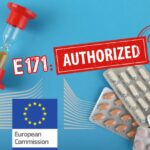
What are the risks for exposed workers?

What are the risks for exposed workers?
By the AVICENN team – Last modification January 2024
New properties, new risks?
At the nanometric scale, materials can have enhanced or new properties, some potentially dangerous for exposed workers (higher reactivity, explosiveness, flammability, etc.).
Among them, the potential for emissions and occupational exposure to aerosols during operations involving nanomaterials has been considered one of the main emerging risks in the workplace since at least 2009 by EU-OSHA1See Workplace Exposure to Nanomaterials, EU-OSHA, European Agency for Safety and Health at Work, 2009.
Risks still not well understood
The impact that exposure to manufactured nanomaterials may have on human health is still largely unknown and fraught with uncertainty.
Knowledge of the specific health effects on workers is even more limited.
Rare and limited toxicological studies
The scarcity and limitations of toxicological studies do not allow for simple and unambiguous answers on the short-term risks of nanomaterials. In particular, until recently, few studies focused on the inhalation of nanomaterials, even though this is the most likely route of occupational exposure and the one of greatest concern for exposed workers2See our fact sheet on the entry points and fate of nanomaterials in the human body. This exposure is now being given more consideration. Nevertheless, the harmful effects observed in numerous toxicological studies are often contested or minimized by industrialists who try to gain time by waiting for the actual results from epidemiological studies.
An exposure that is difficult to measure
Despite the development of more efficient tools (in terms of sensitivity, reproducibility, flexibility) and of improved knowledge3See in particular the work of INRS on nanomaterials, measurements at workstations are not carried out in a systematic and simple manner. This requires high-performance equipment that is often complex to implement, expensive, and combines several techniques, as well as technical skills that are still rare.
Epidemiological studies rarely of good quality
Effects that can take years to appear
Health effects in workers may take many years to appear, after a relatively long period of repeated exposure and latency between the end of exposure and the date of onset of symptoms or discovery of disease4“Chronic effects – such as lung and circulatory infections – can take decades to manifest and be diagnosed” – Aída Maria Ponce Del Castillo (ETUI), Nanomaterials in the workplace, What are the issues for workers’ health, May 2013. These conditions are not necessarily specific in nature, as there is nothing to distinguish them from another origin, particularly extra-occupational.
It is difficult to establish a clear cause and effect relationship between occupational exposure to nanoparticles and pathologies
The causal link is even more difficult to determine because workers are often exposed to multiple chemicals:
- in the workplace, with interactions between nanos and “classic” and sometimes dangerous chemical substances that are difficult to identify and control (this is called the “cocktail effect”).
- in everyday life, via non-occupational exposure to nanos and chemicals that the general population is exposed to via food, water, cosmetics, air pollution, etc.
In the meantime, in the absence of indisputable toxicological, epidemiological and biomedical data, raw materials in nanometric form continue to be handled by workers without prior information. However, the French authorities have recognized that “efforts must be pursued to improve knowledge and allow, in particular, to refine the assessment of effects and risks “5Response of the French authorities to the public consultation “Towards a strategic nanotechnology action plan (SNAP) 2010-2015”, March 2010. Work on the risks related to occupational exposure to nanos is carried out within specialized platforms on nano risks at INERIS, INRS, and CEA.
Nevertheless, there are worrying signs
Although incomplete, the available data are rather worrying: inhaled nanomaterials can indeed diffuse in the body, be transformed from a physicochemical point of view, and then accumulate in certain organs, in the blood and inside cells6See our fact sheet on the entry points and fate of nanoparticles in the human body and cause disturbances or even harmful effects (pulmonary inflammatory reaction; pulmonary fibrosis; risks of lung cancer in case of inhalation of titanium dioxide nanoparticles and carbon nanotubes for example7See our bibliography “Nanomaterials and occupational health and safety” and especially:
– ROS/RNS Leakage During Frustrated Phagocytosis of Glass Nanofibers Characterized by Nanosensor and its Implications on Lung Injury, Qi YT et al., Nature Nanotechnology, January 2024
– Barthel et al., Needlelike, short and thin multi-walled carbon nanotubes: comparison of effects on wild type and p53+/− rat lungs, Nanotoxicology, 2023
– Barthel et al., Continuous Long-Term Exposure to Low Concentrations of MWCNTs Induces an Epithelial-Mesenchymal Transition in BEAS-2B Cells, 11(7), Nanomaterials, 2021).
As early as 2014, the French National Agency for Health Safety (ANSES) had advocated the classification of nanomaterials as hazardous substances under the European regulation CLP8Evaluation of the risks associated with nanomaterials – Issues and update of knowledge, ANSES, April 2014 (posted online May 15, 2014).
The risk of fire and explosion is also particularly worrying (especially for aluminum, magnesium or lithium nanoparticles as well as for carbon nanotubes)9See in particular:
– Nanomaterials in transport and housing: What are the risks related to thermal degradation, Simon Delcour, LNE, wébinar, June 2019
– Army scientists have a blast with aluminum nanoparticles, U.S. Army Research Laboratory, June 7, 2018.
What are the similarities with asbestos?
In animals, effects similar to those of asbestos have been observed: rats in the laboratory have developed mesothelioma following exposure to certain types of carbon nanotubes. The toxicity of carbon nanotubes has been clarified by numerous studies and not all have the same potential for danger. The longer and thinner they are, the more dangerous they are10See our sheet on the risks of carbon nanotubes. As in the case of asbestos, the consequences of a lack of prevention are worrying because the effects on health are likely to appear several years – or even decades – after exposure to nanomaterials… hence the need to protect workers and to set up a device to monitor their long term health condition.
Various cases of pathologies already reported
Several cases of pathologies observed in workers exposed to nanoparticles have nevertheless already been reported:
- In 2009, lung problems led to the hospitalization of Chinese workers exposed to acrylic nanoparticles for 5 to 13 months11 Exposure to nanoparticles is related to pleural effusion, pulmonary fibrosis and granuloma, Song Y et al, Eur Respir J, 34(3):559-67, September 2009
- At the end of 2013, in Taiwan, a six-month study showed correlations between nanomaterials handling and markers of pulmonary and cardiovascular diseases, markers of inflammation and oxidative stress and antioxidant enzymes12Cf. Hui-Yi Liao et al, Six-month follow-up study of health markers of nanomaterials among workers handling engineered nanomaterials, Nanotoxicology, December 2013.
- In 2014, a young North American chemist who handled (without a mask) nickel nanoparticles in powder form presented various symptoms (throat irritation, nasal congestion, facial redness, skin reaction)13Occupational handling of nickel nanoparticles: A case report, Shane Journeay W, American Journal of Industrial Medicine, 57(9): 1073-1076, September 2014
- In 2017, immunological effects were reported in workers handling manufactured nanoparticles14Cf. Immunological effects among workers handling engineered nanoparticles, Camip Info, April 2018 (summary in French of “Immunological effects among workers who handle engineered nanoparticles”, Glass DC et al, Occupational and Environmental Medicine, 74(12): 868-876, 2017
Note, at the end of 2017, a legal “first” in Europe on occupational exposure to nanoparticles: a Spanish judge considered that a worker who had undergone a kidney transplant should not be assigned to a position exposed to nanomaterials15Prevecion integral, Primera sentencia en Europa sobre exposición a nanopartículas, 15 December 2017 (Una juez de Pamplona decide, en una sentencia admirable, que un trasplantado de riñón es especialmente sensible a las nanopartículas). This opinion could have significant implications in the years to come.
What protection is needed?
Too little protection for workers exposed to nanomaterials
Ten years ago, companies in France and abroad were not able to protect the health and safety of their workers from the risks of nanotechnology16See in particular:
– C.D. Engeman et al, Governance implications of nanomaterials companies’ inconsistent risk perceptions and safety practices, Journal of Nanoparticle Research, 14 (3), 1-12, February 2012
– INRS, Repérage des salariés potentiellement exposés aux nanoparticules, Références en Santé au travail, n°132, December 2012
– Conti J.A. et al. Health and safety practices in the nanomaterials workplace: results from an international survey, Environmental Science & Technology, 42 (9), 3155-3162, 2008. The situation is slowly improving: personal protective equipment (PPE) and collective protective equipment are gradually being introduced, particularly for research and development laboratory staff. These issues of safety of use and health risks are beginning to be taken more into account, but there is still much to be done and efforts must be intensified.
Companies reluctant to participate in risk research efforts
In April 2019, INRS launched a first call to companies using amorphous silicas for research in occupational health: “Occupational exposure to nanostructured amorphous silicas: biomarkers of early effects” (2019-2022). Due to a lack of responses, INRS had to launch a new call two and a half years later, in September 2021… Were more companies recruited? Not really, and the gap between the corporate social responsibility (CSR) claims and the reality can be clearly seen…
Too few practical and directly applicable recommendations
Apart from the publications of INRS, the High Council for Public Health (HCSP) or the European Agency for Safety and Health at Work (EU OSHA),17see our bibliography “Nano and Health at Work”, there are few operational recommendations available to professionals: to date, no guidelines, recommendations from the Haute Autorité de Santé (HAS) or learned societies have been published.
Occupational health professionals working in companies have many questions: where are the nanos? how to identify hazards? how to evaluate exposures? what medical follow-up should be carried out? etc. Their observation is unanimous: intervening and advising is complicated; there is a global lack of knowledge of the risks related to nanos. These professionals stress that they are isolated in the field, lack information and have few partners but this should not lead to inaction.
Many of these occupational health professionals (occupational physicians, nurses, technicians or prevention advisors) have joined working groups on the identification and prevention of nanomaterial-related risks since 2016, set up as part of regional occupational health plans (PRST).
Tools to guide action have been developed and disseminated in the Burgundy-Franco-Comté, Pays de la Loire, Auvergne-Rhône Alpes and New Aquitaine regions. In the companies of New Aquitaine, a network of “nano referents” has been set up in the occupational health services of the 12 departments of this large region, with 4 priority areas: traceability of exposure, information and training on risks, advice to reduce exposure to the lowest possible level, and medical surveillance and health monitoring
The trade unions, particularly the CFDT, organize awareness / training sessions on nano-risks, in conjunction with INRS and AVICENN.
Efforts must be intensified
The combination of all these elements lead us to recommend the utmost vigilance, in accordance with the precautionary principle. The stakes are high and the aim is to avoid repeating the mistakes of the past: if the carcinogenic effects of asbestos were demonstrated in the 1930s, it was not until the 1990s that the first prohibition laws came into force…
Any questions or comments? This information sheet compiled by AVICENN is intended to be completed and updated. Please feel free to contribute.
Our information sheets to go further
Upcoming Nano Agenda

- Scientific conference
- 23rd International conference on Advanced Nanomaterials
- From July 23 to July 25, 2025
- Website: www.advanced-nanomaterials-conference.com

- E-learning program: awareness-raising for personnel who come into contact with nanomaterials during research, formulation, production, maintenance, cleaning, upkeep, etc., as well as safety coordinators or engineers, facility managers, heads of laboratories where nanoparticles are handled.
- Organizers: INSTN Grenoble (CEA)
- On the program:
- 1 – Introduction, definition and characteristics of nanomaterials
- 2 – Toxicity of nanomaterials: the state of knowledge
- 3 – Metrology and characterization of nanomaterials
- 4 – Prevention and protection against nanomaterials in the workplace
- 5 – Quiz: assessment of learning outcomes
- The 2-hour course can be viewed for one month from the date of registration.
- Website: https://instn.cea.fr/…risques-lies-aux-nanomateriaux…

- E-learning program: awareness-raising for personnel who come into contact with nanomaterials during research, formulation, production, maintenance, cleaning, upkeep, etc., as well as safety coordinators or engineers, facility managers, heads of laboratories where nanoparticles are handled.
- Organizers: INSTN Grenoble (CEA)
- On the program:
- 1 – Introduction, definition and characteristics of nanomaterials
- 2 – Toxicity of nanomaterials: the state of knowledge
- 3 – Metrology and characterization of nanomaterials
- 4 – Prevention and protection against nanomaterials in the workplace
- 5 – Quiz: assessment of learning outcomes
- The 2-hour course can be viewed for one month from the date of registration.
- Website: https://instn.cea.fr/…risques-lies-aux-nanomateriaux…
File initially put on line in July 2015
Notes and references
- 1See Workplace Exposure to Nanomaterials, EU-OSHA, European Agency for Safety and Health at Work, 2009
- 2
- 3See in particular the work of INRS on nanomaterials
- 4“Chronic effects – such as lung and circulatory infections – can take decades to manifest and be diagnosed” – Aída Maria Ponce Del Castillo (ETUI), Nanomaterials in the workplace, What are the issues for workers’ health, May 2013
- 5
- 6
- 7See our bibliography “Nanomaterials and occupational health and safety” and especially:
– ROS/RNS Leakage During Frustrated Phagocytosis of Glass Nanofibers Characterized by Nanosensor and its Implications on Lung Injury, Qi YT et al., Nature Nanotechnology, January 2024
– Barthel et al., Needlelike, short and thin multi-walled carbon nanotubes: comparison of effects on wild type and p53+/− rat lungs, Nanotoxicology, 2023
– Barthel et al., Continuous Long-Term Exposure to Low Concentrations of MWCNTs Induces an Epithelial-Mesenchymal Transition in BEAS-2B Cells, 11(7), Nanomaterials, 2021 - 8Evaluation of the risks associated with nanomaterials – Issues and update of knowledge, ANSES, April 2014 (posted online May 15, 2014)
- 9See in particular:
– Nanomaterials in transport and housing: What are the risks related to thermal degradation, Simon Delcour, LNE, wébinar, June 2019
– Army scientists have a blast with aluminum nanoparticles, U.S. Army Research Laboratory, June 7, 2018 - 10
- 11Exposure to nanoparticles is related to pleural effusion, pulmonary fibrosis and granuloma, Song Y et al, Eur Respir J, 34(3):559-67, September 2009
- 12Cf. Hui-Yi Liao et al, Six-month follow-up study of health markers of nanomaterials among workers handling engineered nanomaterials, Nanotoxicology, December 2013.
- 13Occupational handling of nickel nanoparticles: A case report, Shane Journeay W, American Journal of Industrial Medicine, 57(9): 1073-1076, September 2014
- 14Cf. Immunological effects among workers handling engineered nanoparticles, Camip Info, April 2018 (summary in French of “Immunological effects among workers who handle engineered nanoparticles”, Glass DC et al, Occupational and Environmental Medicine, 74(12): 868-876, 2017
- 15Prevecion integral, Primera sentencia en Europa sobre exposición a nanopartículas, 15 December 2017 (Una juez de Pamplona decide, en una sentencia admirable, que un trasplantado de riñón es especialmente sensible a las nanopartículas)
- 16See in particular:
– C.D. Engeman et al, Governance implications of nanomaterials companies’ inconsistent risk perceptions and safety practices, Journal of Nanoparticle Research, 14 (3), 1-12, February 2012
– INRS, Repérage des salariés potentiellement exposés aux nanoparticules, Références en Santé au travail, n°132, December 2012
– Conti J.A. et al. Health and safety practices in the nanomaterials workplace: results from an international survey, Environmental Science & Technology, 42 (9), 3155-3162, 2008 - 17






